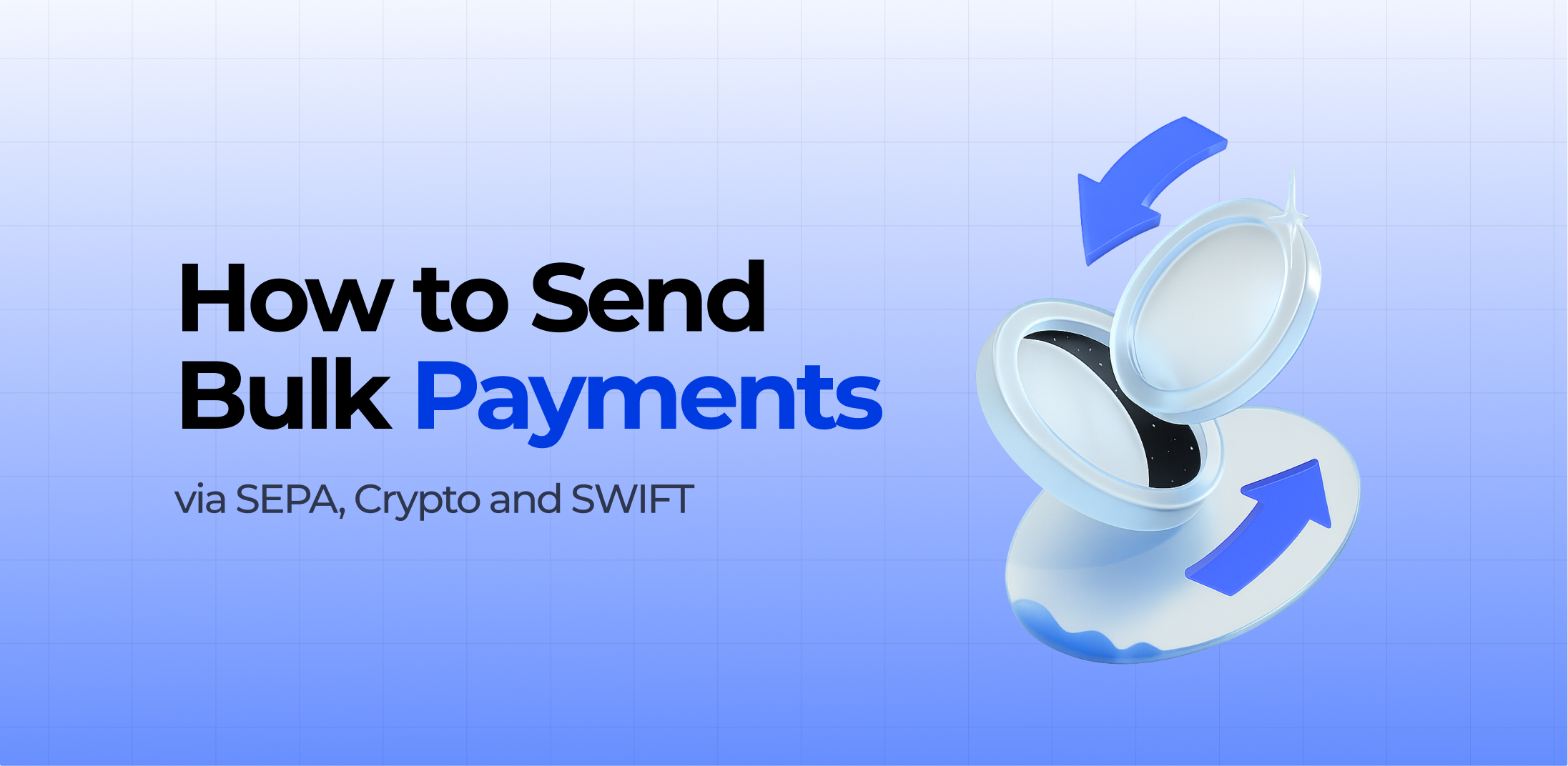Expanding into global markets offers businesses immense growth potential, yet it also introduces significant hurdles, particularly when managing payments from high-risk regions. These areas often grapple with stringent regulations, elevated fraud risks, and banking limitations. This makes seamless and secure cross-border payments a complex task for companies.
In financial transactions, high-risk countries are those with a heightened likelihood of financial crimes, including money laundering, fraud, and sanctions breaches. Such regions often suffer from weak regulatory oversight, economic instability, or restricted access to international banking systems, creating additional layers of risk. Sectors like e-commerce, forex trading, and cryptocurrency platforms are especially vulnerable, given their frequent transactions with merchants from these markets.
To address these challenges, businesses need to integrate fintech-powered solutions that strengthen security, regulatory compliance, and operational efficiency. Cutting-edge payment technologies, including AI-driven fraud prevention, automated KYC/AML (Know Your Customer/Anti-Money Laundering) processes, and blockchain-based transactions are essential for mitigating risks. These innovations enable businesses to reduce fraudulent activities, adhere to global financial regulations, and streamline international payment operations.
This is where PaySaxas emerges as a trusted partner in secure payment processing. With expertise in navigating high-risk transactions, PaySaxas offers businesses multi-currency payment solutions, advanced compliance frameworks, and sophisticated fraud detection systems. Its fintech-driven approach empowers companies to securely manage payments while ensuring financial stability and regulatory adherence in complex markets.
In this article, we’ll delve into the risks associated with processing payments in high-risk countries, explore best practices for risk mitigation, and highlight how PaySaxas provides businesses with the tools to handle these transactions safely and efficiently.
Understanding High-Risk Countries
Expanding into global markets requires businesses to navigate intricate financial environments, especially when engaging with high-risk countries. These regions present substantial obstacles, including strict regulations, elevated fraud risks, and limited banking access.
Maintaining compliance in international transactions is essential, as non-compliance with global financial laws can result in hefty fines, account freezes, or even exclusion from critical payment networks.
Key Factors Defining High-Risk Countries
Determining whether a country falls into the high-risk category involves assessing multiple factors. Banks, payment providers for complex jurisdictions, and regulatory institutions carefully analyze these elements before facilitating transactions in such jurisdictions.
Regulatory Challenges
Many high-risk regions struggle with inadequate financial oversight, increasing their vulnerability to illicit activities. Weak anti-money laundering (AML) frameworks, limited financial transparency, and underdeveloped banking systems create an environment where fraud can thrive, discouraging international businesses from operating there.
Fraud and Chargeback Risks
Businesses processing payments in high-risk regions often face elevated fraud rates and frequent chargebacks. Sectors such as forex trading, online gaming, e-commerce, and cryptocurrency exchanges are particularly affected, as they frequently engage with customers in these markets. Additionally, lax identity verification processes in certain regions further heighten the risk of unauthorized transactions and financial disputes.
Sanctions and Trade Restrictions
Economic sanctions and financial restrictions imposed by organizations like the Financial Action Task Force (FATF), the European Union, and the U.S. Treasury Department can severely limit a country’s access to global financial systems. Companies operating in these jurisdictions must navigate complex compliance requirements to avoid penalties and ensure they adhere to international regulatory standards.
By understanding these factors, companies can better mitigate risks and adopt secure, compliant payment strategies when dealing with high-risk countries.
Key Challenges in Handling Payments from High-Risk Business Regions

Managing payments in high-risk regions comes with considerable challenges that can affect both a company’s financial stability and operational effectiveness. From heightened fraud threats to strict regulatory requirements, businesses must develop strong strategies to navigate these complexities. Below are the primary hurdles companies encounter when processing payments in these jurisdictions.
Fraud and Chargebacks
A major concern in high-risk markets is the prevalence of fraud and chargebacks. In areas where financial oversight is weak and consumer protection laws are inadequate, businesses frequently deal with fraudulent transactions, stolen payment details, and unauthorized chargebacks. Sectors such as forex trading, online gaming, cryptocurrency exchanges, and e-commerce are particularly at risk, as bad actors exploit gaps in payment security to reverse transactions or initiate disputes.
These issues not only lead to financial losses but also damage a company’s reputation with payment processors, resulting in increased transaction fees or account restrictions. To reduce fraud and chargeback exposure, businesses should implement AI-powered fraud detection systems, multi-factor authentication, and proactive chargeback prevention methods. Partnering with specialized payment providers for complex jurisdictions can also help companies establish secure cross-border payment solutions, ensuring transactions remain protected and compliant.
Compliance and Regulatory Hurdles
Businesses operating in high-risk regions must adhere to strict Anti-Money Laundering (AML) and Know Your Customer (KYC) regulations designed to prevent illicit financial activities, such as money laundering, terrorist financing, and fraud. While these compliance measures are essential for global financial security, they often present significant challenges for businesses due to their complexity and evolving nature.
One of the biggest hurdles is the lack of standardized regulations in many high-risk jurisdictions. The absence of clear compliance guidelines makes it difficult for businesses to align with international financial laws. Non-compliance can lead to severe penalties, frozen funds, or even restricted access to banking networks, jeopardizing business operations. To navigate these risks, companies must invest in automated compliance systems, real-time transaction monitoring, and sophisticated identity verification technologies to ensure seamless regulatory adherence.
Banking Restrictions
Limited access to global banking networks is another significant challenge for businesses operating in high-risk countries. Many financial institutions block or severely restrict transactions from regions with elevated financial crime risks, making it difficult for businesses to process payments through major systems like SWIFT (Society for Worldwide Interbank Financial Telecommunication) and SEPA (Single Euro Payments Area).
To overcome these obstacles, companies often turn to alternative payment solutions, including stablecoins, local banking partnerships, or fintech-driven multi-currency accounts. PaySaxas specializes in providing secure cross-border payment solutions, offering businesses the flexibility and compliance support needed to operate efficiently in complex financial environments.
Currency Volatility and FX Risks
Managing payments from high-risk regions comes with the added challenge of currency volatility, where unpredictable exchange rate fluctuations can impact financial stability. Economic instability, inflation, and geopolitical tensions often cause rapid currency depreciation, leading to increased costs and financial uncertainty for businesses. It operates across multiple markets.
For companies dealing in multiple currencies, foreign exchange (FX) risks can directly affect profitability and cash flow management. Sharp currency swings can erode revenue margins, inflate operational expenses, and make financial forecasting more difficult. To counteract these risks, businesses should adopt hedging strategies, leverage real-time FX rate monitoring, and utilize multi-currency accounts to facilitate currency diversification and mitigate exposure to fluctuating exchange rates.
Best Practices for Secure Payment Processing

Managing payments from high-risk regions demands a careful, strategic approach to reduce risks while optimizing operational efficiency. The following best practices focus on tools, techniques, and strategies that help businesses navigate these challenges.
Implementing Robust KYC and AML Procedures
The backbone of secure payment processing is implementing strong Know Your Customer (KYC) and Anti-Money Laundering (AML) protocols. These measures are critical in verifying customer identities and ensuring that businesses do not unknowingly engage in financial crimes such as money laundering or terrorist financing.
Customer verification helps prevent fraud, ensures compliance with global regulations, and fosters transparency in client transactions. Typically, this process involves gathering personal information, validating documents, and cross-referencing data with trusted third-party sources. Non-compliance can lead to severe penalties, including fines and reputational harm.
Moreover, AML procedures are essential to detect and flag suspicious transactions. Businesses should integrate screening tools to identify unusual patterns and ensure that they don’t inadvertently conduct business with high-risk individuals or entities.
Leveraging AI-Driven Fraud Detection
Fraud risks escalate in high-risk areas, making AI-driven fraud detection tools indispensable. These advanced tools use machine learning algorithms to detect irregular transaction patterns and assess potential threats in real-time. By incorporating predictive analytics and behavioral biometrics, AI systems can identify anomalies such as unusual spending behaviors, account takeovers, or fraud attempts before they result in major financial losses.
These tools evolve continuously to adapt to new fraud methods, providing an added layer of protection that traditional methods often miss. Additionally, implementing AI-driven systems reduces the need for manual oversight, enhancing both security and operational efficiency.
Diversifying Payment Methods
Offering a diverse range of payment options is a highly effective strategy for minimizing risks in high-risk regions. Businesses should consider incorporating local payment methods that are popular and trusted by consumers in specific regions. These options might include e-wallets, mobile money systems, and local bank transfers, which can help increase transaction success rates and streamline customer experience.
In addition to traditional methods, cryptocurrency payments are emerging as a popular and secure alternative, particularly in high-risk markets. Cryptocurrencies such as Bitcoin, Ethereum, and stablecoins offer enhanced security and can bypass many of the restrictions tied to conventional banking systems.
They typically carry lower transaction fees and offer greater privacy and security, making them an attractive option for businesses operating in complex jurisdictions. Stablecoins like USDC provide the additional advantage of price stability compared to other volatile cryptocurrencies, reducing financial risk for businesses.
Enhancing Transaction Monitoring
Effective transaction monitoring is essential for identifying and addressing financial risks in real-time. AI-powered monitoring systems can automatically analyze transactions and assign risk scores based on factors like transaction size, frequency, and geographical location. These systems can quickly detect unusual activities, such as large transactions or transfers that deviate from the customer’s normal behavior.
By integrating automated risk scoring, businesses can promptly identify red flags, such as failed payment attempts or suspicious transactions originating from high-risk countries. Automated detection processes enable businesses to investigate and resolve potential threats in real-time, preventing substantial losses or legal challenges.
Furthermore, these systems can be customized to trigger alerts when certain predefined conditions are met. It ensures businesses are always vigilant and compliant with global regulatory requirements.
Using Multi-Currency Business Accounts
For businesses operating in multiple currencies, multi-currency business accounts offer significant benefits. These accounts allow businesses to hold and manage funds in various currencies, including stablecoins like or USDC, which are less affected by currency volatility.
Holding funds in stable currencies provides businesses with greater predictability and security, especially in markets with fluctuating local currencies. Stablecoins, which are often pegged to fiat currencies like the US dollar, offer price stability and help mitigate the risks of devaluation that businesses might face in unstable regions.
Additionally, multi-currency accounts allow businesses to process cross-border transactions with greater efficiency. These accounts simplify currency conversions, reduce fees, and facilitate international payments without relying on expensive foreign exchange services or dealing with delays. This operational flexibility is invaluable for businesses managing payments in high-risk regions.
How PaySaxas Helps Businesses Manage Payments Securely

As businesses continue to expand in the global market, they face increasing challenges in managing financial operations in high-risk environments. The need for robust, secure, and compliant payment solutions has never been more crucial.
PaySaxas stands at the forefront of addressing these challenges, offering a comprehensive suite of services that cover everything from fraud prevention to regulatory compliance, multi-currency management, and adaptable payment infrastructure. Let’s explore how PaySaxas empowers businesses to navigate these complexities with confidence.
Cutting-Edge Fraud Prevention Tools
Preventing fraud is a primary concern for businesses, particularly those operating in high-risk areas. PaySaxas employs advanced, AI-driven fraud detection systems to protect your business from fraudulent activities and reduce the risk of financial loss.
Our sophisticated AI technology works tirelessly in real-time, continuously analyzing transaction data and identifying patterns to spot anomalies. Over time, the system improves its detection capabilities by learning from past transactions, which enables it to adjust to new, emerging fraud tactics. This proactive, adaptive approach helps prevent fraud before it negatively impacts your operations.
Additionally, PaySaxas integrates multi-layer security measures, which work together to form a powerful defense against potential threats. Our system includes real-time transaction monitoring, behavioral analytics, and automated fraud scoring to detect suspicious activity instantly. By implementing this approach, businesses can spot irregularities, such as large or frequent failed transactions, early in the process, allowing them to act quickly to prevent escalation.
By combining AI technology with a multi-layered security framework, PaySaxas offers an enhanced level of protection, ensuring that businesses can operate safely and securely in a rapidly changing financial landscape.
Comprehensive Regulatory Compliance
Navigating the regulatory landscape, especially in high-risk regions, is critical for businesses seeking to maintain secure operations. PaySaxas understands this need and provides comprehensive support to help businesses comply with essential financial regulations.
Our services are designed to meet and exceed international regulatory standards. The KYC (Know Your Customer) process is seamlessly integrated into our systems, enabling businesses to efficiently verify customer identities. This process involves verifying personal details, cross-checking documents, and conducting background checks through trusted third-party account providers. These steps help businesses stay compliant with anti-money laundering laws and avoid inadvertently engaging in unlawful activities.
For businesses operating in high-risk jurisdictions, PaySaxas offers tools that facilitate compliance with AML (Anti-Money Laundering) regulations. By screening customers and monitoring transactions for signs of suspicious activity, our system helps businesses stay vigilant against money laundering and other financial crimes. This compliance support not only helps businesses avoid costly penalties but also protects their reputation and builds trust with customers.
Global Multi-Currency Payment Solutions
As businesses expand internationally, the ability to process payments in multiple currencies becomes essential. PaySaxas offers multi-currency payment solutions that simplify the process of handling cross-border transactions, making it easier for businesses to expand and thrive in the global market.
A standout feature of our multi-currency solution is our support for stablecoin settlements, such as USDC (USD Coin). These stablecoins are pegged to the US dollar, ensuring stability and reducing the volatility commonly associated with traditional currencies. This feature is particularly useful for businesses engaging in cross-border payments, as it allows for more predictable and stable transactions.
Stablecoins offer significant advantages, especially for businesses operating in high-risk regions. By using stablecoins, businesses can avoid the challenges of fluctuating local currencies, which can complicate cross-border transactions. Furthermore, stablecoins reduce the reliance on traditional banking systems, which are often slow and costly, particularly in countries with less stable financial infrastructure. This streamlined process results in faster and more cost-effective transactions.
In addition to stablecoin support, PaySaxas ensures that businesses can efficiently manage and convert currencies, offering greater flexibility when handling funds across different markets. This feature is especially beneficial for businesses in regions with unstable currencies or strict banking regulations, as it provides a more secure and efficient way to manage financial operations.
Future Trends in High-Risk Payment Processing
As businesses continue to expand on a global scale, the demand for secure and efficient payment systems in high-risk environments becomes increasingly critical. The future of payment processing in these sectors will be driven by innovative technologies and the ever-evolving global regulatory landscape. Below are some of the key trends that will shape the industry in the coming years:
Blockchain-Based Payment Solutions on the Rise
Blockchain technology has rapidly emerged as a transformative force in the financial sector, particularly when it comes to payment processing. Its decentralized nature provides businesses with a secure and efficient platform for managing transactions, especially in high-risk regions. By reducing dependence on traditional financial institutions, blockchain mitigates the risks associated with fraud, data breaches, and other financial crimes.
The technology’s transparent, immutable ledger ensures that transactions are recorded in a tamper-proof manner, enhancing security and trust. This also streamlines cross-border payments, reducing the reliance on intermediaries and significantly cutting down transaction costs. The growing integration of blockchain solutions is paving the way for businesses to utilize digital currencies, such as stablecoins, offering an efficient and stable alternative to conventional payment systems.
AI and Machine Learning for Real-Time Fraud Prevention
The integration of artificial intelligence (AI) and machine learning (ML) is becoming increasingly vital in the battle against fraud in payment processing. These advanced technologies help businesses identify and address fraudulent activities in real time by analyzing large volumes of transactional data and detecting patterns indicative of suspicious behavior.
AI-powered fraud detection systems are continuously evolving, using sophisticated algorithms that adapt to new and emerging fraud tactics. By leveraging historical transaction data, machine learning models can improve their accuracy in spotting fraud before it escalates, providing a more proactive approach to safeguarding financial transactions. This enhanced capability is particularly important for businesses operating in high-risk sectors, where financial threats are more prevalent.
Adapting to Evolving Global Regulations in High-Risk Payments
As the world of finance becomes more interconnected, global regulatory bodies are imposing stricter rules to ensure that businesses comply with anti-money laundering (AML) and know-your-customer (KYC) standards. These regulations are especially significant for businesses operating in high-risk areas, where the legal frameworks are complex and continuously changing.
Looking ahead, we can expect increased collaboration between international regulatory bodies, aiming to create cohesive global standards for financial transactions. The integration of new technologies, such as blockchain and AI, will likely accelerate these regulatory changes as governments and regulators strive to balance innovation with compliance. As a result, businesses must remain agile and proactive in adapting to these shifting regulatory landscapes to maintain secure, compliant, and efficient payment systems across borders.
Conclusion
Managing payments from high-risk countries demands a well-planned strategy to ensure both security and compliance while maintaining operational efficiency. Key strategies for handling payments in these regions include implementing strong fraud prevention mechanisms, complying with Anti-Money Laundering (AML) and Know Your Customer (KYC) regulations, and utilizing advanced technologies such as blockchain and AI for enhanced protection. Additionally, adopting multi-currency payment solutions and flexible infrastructures, including stablecoin settlements, allows businesses to manage these complex environments with ease.
PaySaxas stands as a reliable partner for businesses in need of secure, compliant, and efficient payment solutions specifically designed for high-risk markets. With our cutting-edge fraud detection systems, robust regulatory compliance tools, and multi-currency payment capabilities, businesses can confidently process payments while staying aligned with global standards. PaySaxas helps mitigate risks, streamline payment processes, and allows businesses to focus on their growth without the complexity of dealing with stringent regulatory challenges.
If you’re looking for a tailored payment solution that addresses the challenges of high-risk countries effectively and securely, get in touch with PaySaxas today. Our expert team is ready to assist you in optimizing your payment systems and ensuring your business remains compliant and protected in an ever-evolving financial landscape. Reach out now to discover how PaySaxas can elevate your global payment operations.








